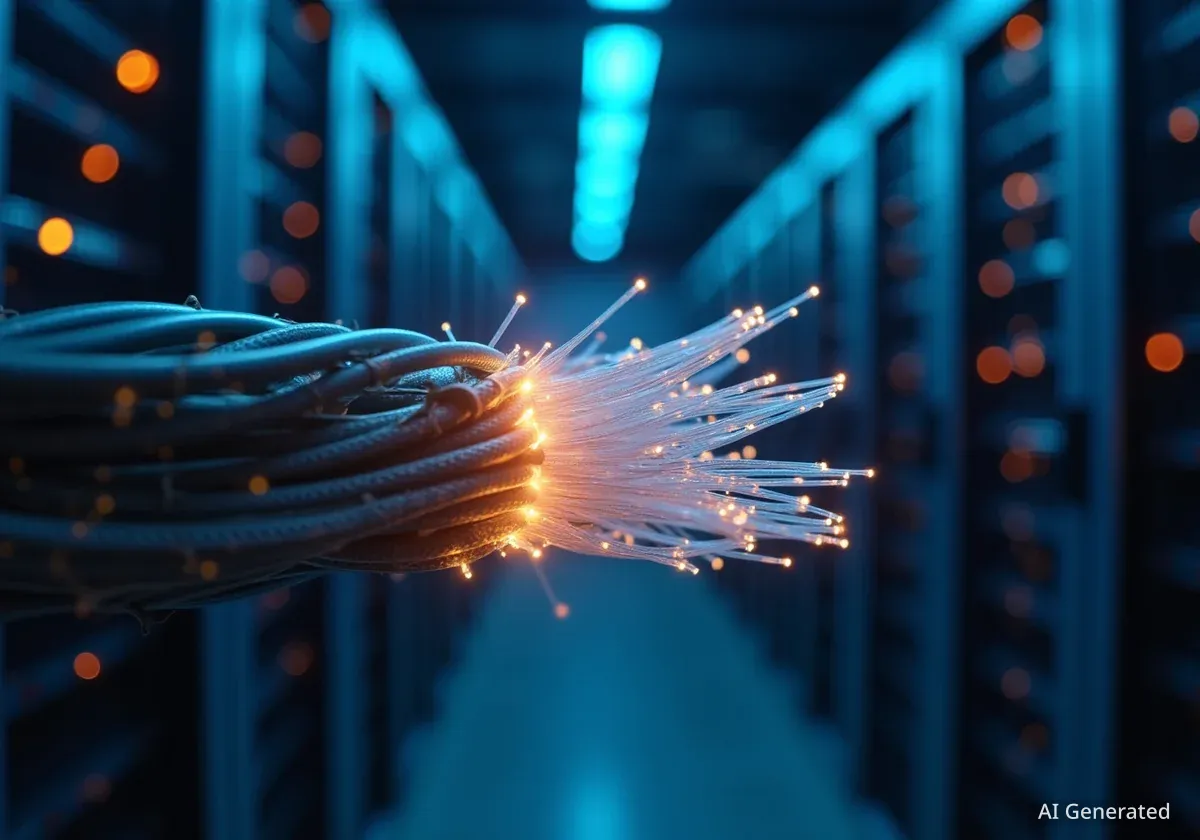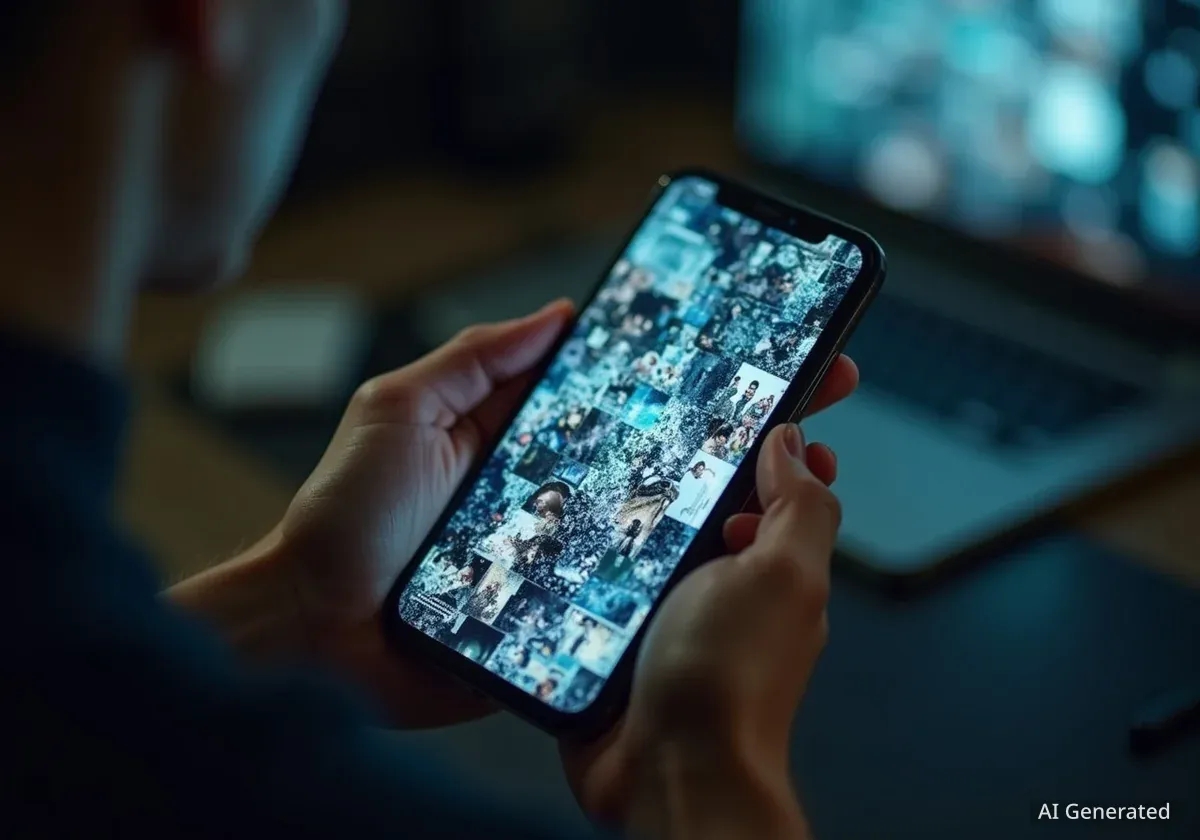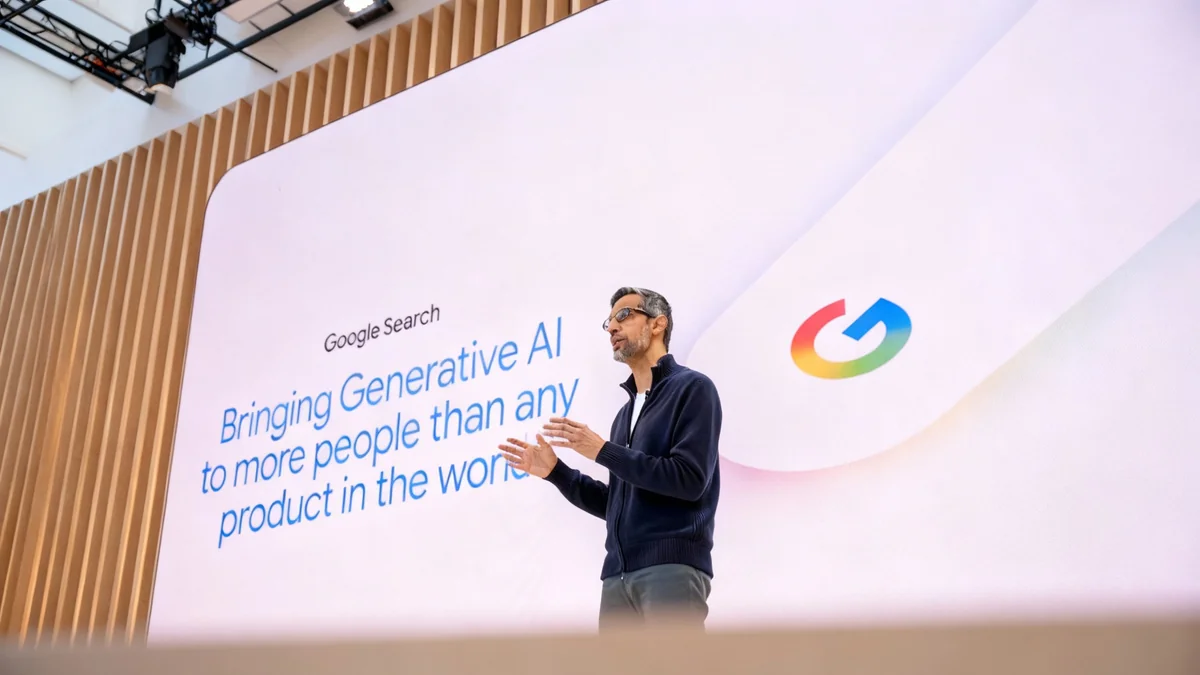Corning Incorporated, a company with a 174-year history known for creating Pyrex cookware and durable Gorilla Glass for smartphones, is emerging as a critical supplier for the artificial intelligence industry. The company's long-term investment in glass science has established it as the leading provider of fiber optic cables, an essential component for the data centers that power AI technologies.
As the demand for artificial intelligence accelerates, the need for new data centers to process vast amounts of information is surging. This has placed Corning's specialized glass products at the center of the AI infrastructure boom, positioning the legacy company for significant growth, according to market analysts.
Key Takeaways
- Corning, a historic glass manufacturer, is a dominant supplier of fiber optics for AI data centers.
- The rapid expansion of AI is driving unprecedented demand for data center infrastructure, which relies on high-speed fiber optic cables.
- Decades of research and development in glass technology have given Corning a significant advantage in this specialized market.
- Analysts identify the company as a key beneficiary of the long-term investment trend in artificial intelligence infrastructure.
From Kitchenware to Core AI Infrastructure
For most consumers, the name Corning is associated with household products like Pyrex glass dishes or the damage-resistant Gorilla Glass on their cellphones. The company's history is rich with innovations that have shaped daily life, including providing the glass encasement for Thomas Edison's first commercially viable incandescent light bulb.
However, behind these well-known consumer applications, Corning has spent decades perfecting the science of glass for industrial and technological purposes. This deep expertise is now proving invaluable in the 21st-century technology race. The company's core business in optical communications is now at the forefront of its growth strategy.
A Legacy of Innovation
Founded in 1851, Corning has a long track record of materials science breakthroughs. Its development of low-loss optical fiber in 1970 by researchers Robert Maurer, Donald Keck, and Peter Schultz laid the groundwork for today's telecommunications and internet infrastructure, a foundation that is now critical for the AI revolution.
While chip designers like Nvidia and AI startups often capture the headlines, the physical infrastructure that supports them is equally important. Artificial intelligence models require the processing and transfer of enormous datasets, a task that depends on the speed and reliability of the underlying network. This is where Corning's technology plays a pivotal role.
The Role of Fiber Optics in Powering AI
Modern data centers are the factories of the digital age, and fiber optic cables are the assembly lines. These cables, which consist of thin strands of highly pure glass, transmit data as pulses of light over long distances with minimal signal loss. This capability is essential for connecting thousands of servers and processors within a single data center.
AI workloads, such as training large language models, are incredibly data-intensive. They require constant, high-speed communication between graphics processing units (GPUs). Traditional copper wiring is unable to handle the bandwidth and speed required over the necessary distances inside a large data center, making fiber optics the industry standard.
Speed and Bandwidth Advantage
Fiber optic cables can transmit data at speeds approaching the speed of light and offer significantly higher bandwidth than copper cables. This allows data centers to move petabytes of information efficiently, which is a fundamental requirement for training and running complex AI systems.
The architecture of AI data centers is evolving to handle these demands. The distances between interconnected servers are growing, further increasing the reliance on optical solutions. According to industry reports, the demand for optical components within data centers is projected to grow substantially over the next five years, directly benefiting dominant suppliers like Corning.
Market Dominance Through Strategic Investment
Corning's leading position in the fiber optics market was not achieved overnight. It is the result of a long-term strategy focused on sustained investment in research, development, and manufacturing capacity. While other companies may have shifted focus, Corning continued to refine its glass and fiber production processes.
This dedication has created a significant competitive advantage. Manufacturing high-quality optical fiber is a complex and capital-intensive process that requires deep expertise in materials science. Corning's established manufacturing footprint and intellectual property make it difficult for new competitors to enter the market and compete on a similar scale.
"The infrastructure build-out for AI is one of the most significant technology shifts in a generation. Companies that provide the fundamental building blocks, like high-speed optical interconnects, are in a prime position to capitalize on this multi-year trend," state market analysts observing the sector.
As a result, the company has become the go-to supplier for hyperscale data center operators, including major technology companies that are investing billions of dollars in their AI capabilities. This established relationship and trusted reputation solidify its market share.
Future Outlook Amid the AI Expansion
The AI boom is still in its early stages, but the infrastructure investment cycle is well underway. The construction of new data centers and the upgrading of existing ones are expected to continue for the foreseeable future. Every new facility represents a significant new source of demand for Corning's optical products.
Investors have taken notice of this trend. While Corning's stock (NYSE: GLW) is also influenced by its other business segments, such as display technologies for televisions and automotive glass, the optical communications division is increasingly seen as its primary growth engine.
The company's role as a foundational technology provider offers a different type of exposure to the AI trend. Rather than being tied to the success of a single AI application or model, Corning's business is linked to the overall growth of the digital infrastructure that supports the entire ecosystem. This makes it a crucial, if less visible, winner in the ongoing technological revolution.
As long as the need for more data, faster processing, and larger AI models continues to grow, the demand for the specialized glass strands made by this 174-year-old company is expected to remain strong.





